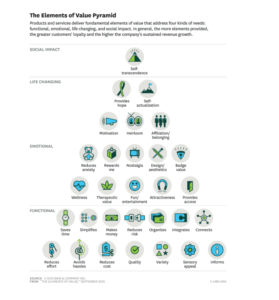Angelo A.
CEO
SaaS has been established as one of the preferred ways of entrepreneurs to create their software products and deliver services to their users. Even though it’s not the only feasible tech architecture it has grown in popularity and according to statista the SaaS market is expected to reach USD 253.9 B in revenue in 2023, growing at a 7.89% per year and resulting in USD 344 B by 2027.
Open AI’s ChatGPT release has had a disruptive impact in many industries beyond tech, presenting a big number of applications many of them yet to come, accelerating the AI race worldwide, influencing investment funds to prioritize resources for AI-powered ventures despite the recent uncertainty and shaky economy and encouraging even more entrepreneurs to step into the SaaS world (especially AI-Powered SaaS) in order to be part of the current huge economic value creation phenomena.
But as things stand today, what are the most important things to consider in order to build a high-growth SaaS and how to leverage the current ecosystem and tools in order to succeed? In this blog we’ll go over 7 of the most effective strategies to build high-growth SaaS products and companies.
Table of Contents
Introduction
1. Starting with a vision but keeping an open mind
2. Creating a strategic offering
3. Being passionate about what you’re doing
4. Setting the right team
5. Partnering with the best
6. Adopting a Lean and Agile approach
7. Leveraging AI technology
1. Starting with a vision but keeping an open mind

The product journey starts with a vision in mind on what you want to create, change or improve in the world. There are countless stories about how visions started, especially those which founders wanted to solve a problem they had themselves or found out about an apparently high potential opportunity to step into the entrepreneurial world.
However, cases where founders ended up building a great product totally based on their original idea tend to be rare, most founders started iterating on their idea and ended with a slightly different or completely different one after some or many iterations, in most cases their recipe for success has included keeping an open mind to look for what works and abandoning what doesn’t, referred in the lean product development world as persevere or pivot.
To be fair, knowing when to persevere or pivot in a given stage of building a SaaS product can be very tricky and it should be based on revisions of user feedback and gathered data but the important thing is that you should stay open to the fact that what you’re building may not work but if you stay the course you will eventually find something that will work, in short, you must be willing to fail (learn) a lot along the way, these failings will be your stepping stones to success.
2. Creating a strategic offering

How can we create a strategic offering? Or, what’s the best product or service we can create?,
It all comes down to creating and delivering value, and even though what consumers truly value is usually very complex to define and the perceived value lies in the eye of each customer, there are universal building blocks of value which can help companies design better products and services to generate new business opportunities in their markets or break into new ones.
A research published by Harvard business review outlines 30 elements of value. These elements fall into four categories: functional, emotional, life changing, and social impact and it traces its conceptual roots to the psychologist Abraham Maslow’s “hierarchy of needs”. Maslow argued that human actions arise from an innate desire to fulfill needs ranging from the very basic (security, warmth, food, rest) to the complex (self-esteem, altruism. see image below).
In this hierarchy the most powerful forms of value live at the top, and to be able to deliver on those higher-order elements, a company must provide at least some of the functional elements required by a particular product category e.g. When someone says her bank is “convenient,” its value may derive from some combination of the functional elements, saves time, avoids hassle, simplifies, reduces effort and gives her access to VIP services based on her income (affiliation).
Many combinations of value elements exist in successful products and services today and we can use this framework to ideate new products and services that innovate by delivering new combinations of different value elements which can be a game changer in terms of the customer perceived value, generated revenue, business growth and client satisfaction.
3. Being passionate about what you’re doing

While it may sound cliche it still remains true, let’s be honest, building a startup is hard, it’s going to consume a big part of your time and energy, probably part of your own financial resources not to mention the opportunity cost which seems widely overlooked, let’s explore these things a bit.
Time and energy
You will have to put A LOT of hours of hard work for 1-5 years or more (depending on your exit expectations) in order to make your venture work, ideally you will be 100% dedicated to your startup but depending on your financial situation you will also have a job which requires quite more effort, until you are financially able to quit your job to focus on your startup, in short you will spend a good part of your daily life in your startup.
Financial resources
Of course the required resources will vary depending on your specific business and whether or not you raise investment capital and at what stage you do it, but even if as entrepreneur you want to rely on venture capital there are reasons why you will probably need to invest some of your own resources:
Finding an investor willing to put money into your venture may take you from several months to a couple of years. In the meantime you should make as much progress as possible on your own.
If you build a MVP or demonstrable early version of the product and ideally have some traction rather than just having an idea you will be able to get a better investment deal, giving up quite less equity and control of your company in exchange for the investor’s money.
Potential investors will evaluate among other things how long you have been working in your startup and what has been invested when they are making their investment decisions. If you don’t believe enough in your venture to invest your own money, why should someone else do it?
Opportunity cost
Creating a startup will consume time you could spend doing other things such as improving your skills or learning a new one, spending time with your family, partner or friends, enjoying that hobby, advancing your education, etc.
In conclusion, since working on a startup is a journey that requires lots of investment, it’s important to make sure you’re pursuing a venture that personally fulfills you and that you feel excited to work on, this will make all the difference in your day to day.
4. Setting the right team

Entrepreneurship is not a one man show, it’s all about people, or more specifically, about teams, teams working efficiently and collaborating to do complex work and accomplishing relevant milestones by combining team members’ knowledge, skills and effort.
Some of the most important matters to consider when setting the right team are personal fit, competence and complimentary skills, let’s see:
Personal fit
As stated, being passionate about your initiative and working on something you love highly impacts how fulfilled and positive you feel in your journey, similarly, working with people you like and enjoy working with will make A BIG difference in your day to day work and will help you enjoy the journey much more, besides that you will likely get better results and achieve more.
Competence
Specialists outperform generalists 10X or more in almost every field, e.g. hiring a programmer vs a database administrator for a complex data project, even as an entrepreneur working in an early stage company, whenever possible is convenient to leverage real specialists to do the job, specialists are more expensive, however the extra cost will be well compensated with achieving high quality results, saving time and saving the energy of dealing with unwanted results.
Complementary skills
High performing teams excel in having team members with different skills so that combined cover all the necessary domains required to execute the project, in software projects, ideally you want to have a team of tech specialists collaborating with business experts, the important thing is to avoid external dependency as much as possible in order to achieve high levels of productivity.
5. Partnering with the best

No one can do it all on his own, when going through your startup journey you will have to partner with (or buy from) many products and services providers such as hosting server provider, cloud platform provider, computer manufacturers, software products vendors, operation support services, consulting services, etc. Many of these products and services will be critical to your business success, even the simple ones, e.g. you need a good hosting so that your website is always available. There are several reasons for choosing top partners, let’s see:
Reliability and business continuity
In many cases the reliability of your business will depend a lot on the strength of your partners and providers. In today’s world, companies covering all the stages in the value delivery process are rare, the global economy lies in the hands of partnership and collaboration.
yes, the top providers in almost every product or service category are usually more expensive, they are required to charge higher prices in order to deliver higher quality, however, there are many top performing companies selling affordable products and services and even though in these cases their price may still be above the average price the investment will pay in the short term with a stronger reliability, higher quality and avoided setbacks, and in the middle and long term with a solid business continuity and reputation.
Increased reputation and new business opportunities
In today’s economy reputation has become even more critical due to the information access that current buyers possess, businesses with a poor reputation will have a hard time attracting new customers and earning new business opportunities. Partnering with strong providers will help you enhance your business capabilities and performance and create great experiences for your customers and thus build a strong reputation along the way, this will allow you to keep existing customers, get new customers by referrals of existing happy customers and even attract new potential customers and business opportunities.
Cost
Many have heard the “buy cheap, buy twice” quote or heard about John Ruskin’s law of business balance which “prohibits paying a little and getting a lot — it can’t be done. If you deal with the lowest bidder, it is well to add something for the risk you run, and if you do that you will have enough to pay for something better”. This is something most of us have experienced in the past, when we purchased a low cost product that ended up being low quality, didn’t do what was expected to do or didn’t fit our purposes, we had to replace it with a different one and thus it ended up costing way more than the initial paid price plus the time and energy wasted solving all the caused issues.
Saving time
Time is the most precious resource for people, and even more for entrepreneurs, dealing with a low quality product or service and the associated unwanted results will consume huge amounts of precious time and energy that otherwise could have been devoted to improving your product or service, developing new business opportunities, enhancing your business capabilities, investing in your personal wellbeing and development, you name it.
The top performing and most successful companies buy time by buying the best products or services available in every category, in many cases they know the higher price will pay back big time.
6. Adopting a Lean and Agile approach

The Lean and Agile methods are complementary to each other and have become industry references for creating successful software products efficiently and eliminating waste as much as possible, even though these concepts are relatively simple and may be to some extent known to many professionals in the software sector they are still difficult to apply to real life situations, requiring mastery of the lean and agile principles, their approaches and methods and the available conceptual and technological tools, leadership traits, communication skills, effort and discipline, becoming a career role itself within the industry (scrum masters, agile coaches and consultants).
Simply put, having a lean approach means looking for and avoiding all types of waste while building your product, to do this we approach it as an experiment and work with hypothesis, e.g. the users will like and use this new feature to pay their bills, this is validated or unvalidated by going throw Build, Measure, Learn cycles.
Let’s say you want to build a new product, instead of working 6 months or 1 year on it, you spent up to 1 month building a really small version of that product (minimum viable product, MVP for short) you get relevant data and user feedback (measure) and learn if that feature or product is something the users really want and you should persevere or otherwise you should pivote and invest those efforts and resources in another type of feature or product .
Having an agile approach refers to creating your product iteratively and incrementally, meaning that you build relatively small sets of features in cycles called sprints that are 1-4 weeks long, after each cycle you check if you are building the right thing by getting user feedback (usually done in sprint reviews) and if you are building the thing right by checking your development process (usually done in sprint retrospectives).
These two concepts combined are extremely powerful in reducing project risks and boosting your chances of succeeding, since these are complex to do right we recommend having an expert train and assist you in putting these processes in place and executing them properly.
7. Leveraging AI technology

With the current progress of AI technology that can get you tons of work done in seconds it may seem like no brainer to aim to leverage it as much as you can to boost your business, however, AI is a general purpose and fairly complex technology requiring in many cases expert knowledge, big amounts of data, substantial effort, time and resources to execute properly.
The requirements for successfully adopting AI and the benefits it will bring lies on the type of business you’re running and your specific situation and goals and thus there is no one single formula for doing it right, nevertheless, there are strategic approaches that can help to maximize the efficiency in your AI journey, let’s explore them:
Defining your highest impact areas
Since AI is a general purpose technology, it can be applied in any business unit from production, to operations, from sales or marketing to customer service etc, so a good a place to start is to define what are the 20% of business units, processes or product features that if improved will deliver the 80% of benefits for your business and/or deliver the highest ROI
Start small and grow over time
As stated, many AI projects require a team of ML engineers and data scientists, somewhere between 6 and 8 months or more in certain cases and hundreds of thousands of dollars.
However, while you get familiar with the existing AI technologies or dive deeper into any of these you can start easier by leveraging third party AI-powered SaaS products that help your bottom line, this way you just pay a relatively small fee and get a working product, a support team and practical knowledge on existing tools of your interest.
If you want to start right away gaining hands-on experience, start defining and running pilot projects, it may be worth it to start with no-code AI platforms like aws sagemaker canvas that with little money and little or no previous experience allows you to start training and using ML models for solving real life problems.
Creating a Roadmap
Once you have outlined your goals towards the highest ROI initiatives, it will be easier for you to define a high level roadmap with these initiatives to drive all the conversations with your team around goals, timelines, scopes, resources, etc, in order to communicate these initiatives easily, provide transparency, set the expectations properly and gain and maintain the required buy-in within your company to get the required collaboration and resources.
Conclusion
Creating a SaaS product is a long journey, however, taking these strategies will help you define the right vision for your business and get you in the right direction to achieve it while you leverage top industry knowledge and save countless days, money and hurdles along the way to invest them in the things that are actually worth it.
Thanks for reading!
Published: Nov-28-2023
